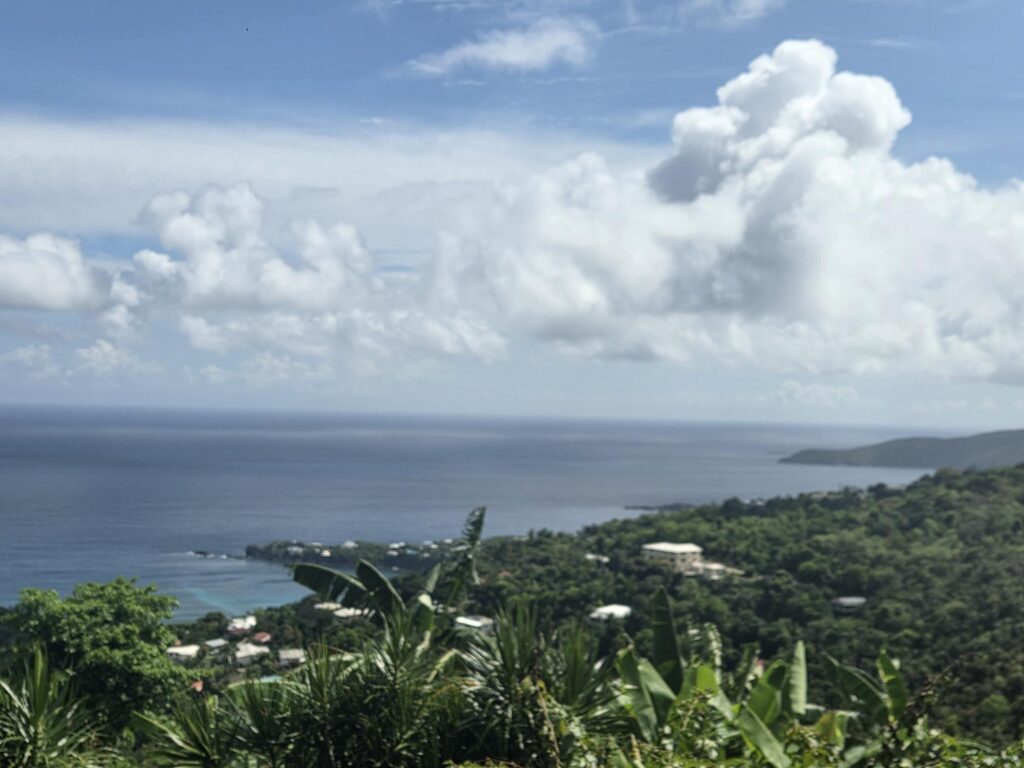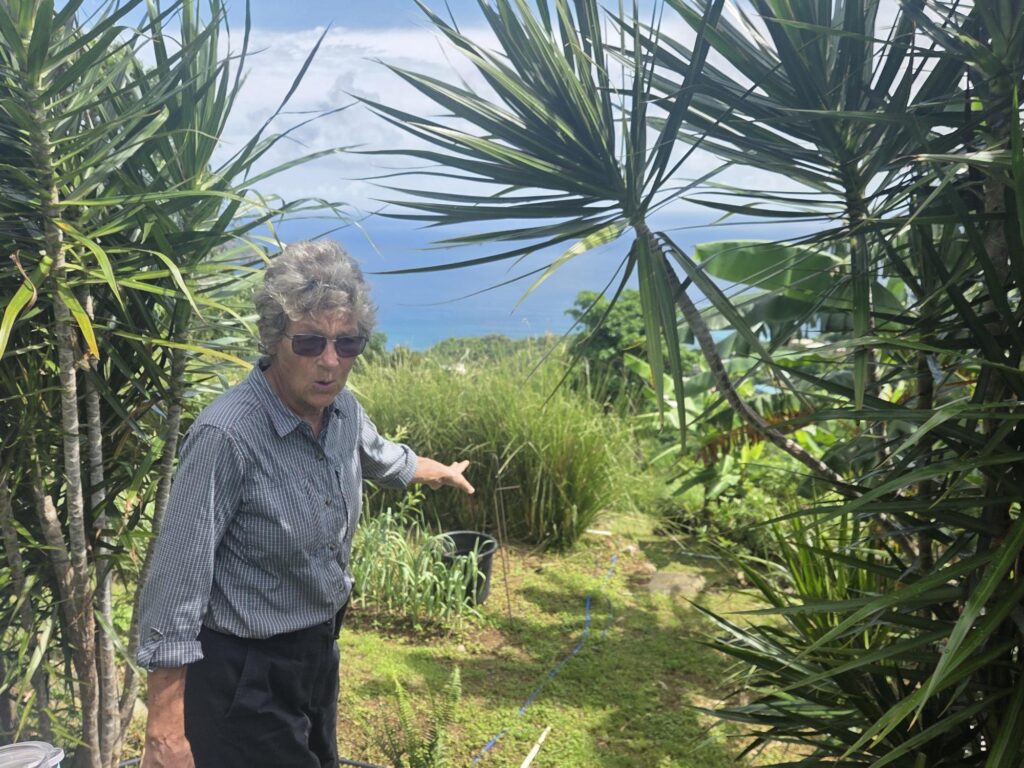Usages of Vetiver Grass in the USVI
How high can a hedgerow of Vetiver grass grow and how deep do the roots go? DPNR’s Territorial Parks and Protected Areas Director Kitty Edwards joined Dr. Laura Martin on the Northside of St. Thomas to explore the diverse and dynamic uses of Vetiver grass on her farm. Dr. Martin also collaborates with local famers on St. Thomas and St. Croix through an organization called Sustainable Agriculture Research and Education or SARE, which provides Vetiver plants to help farmers protect their topsoil leading to better crop retention and resilience against environmental runoff.
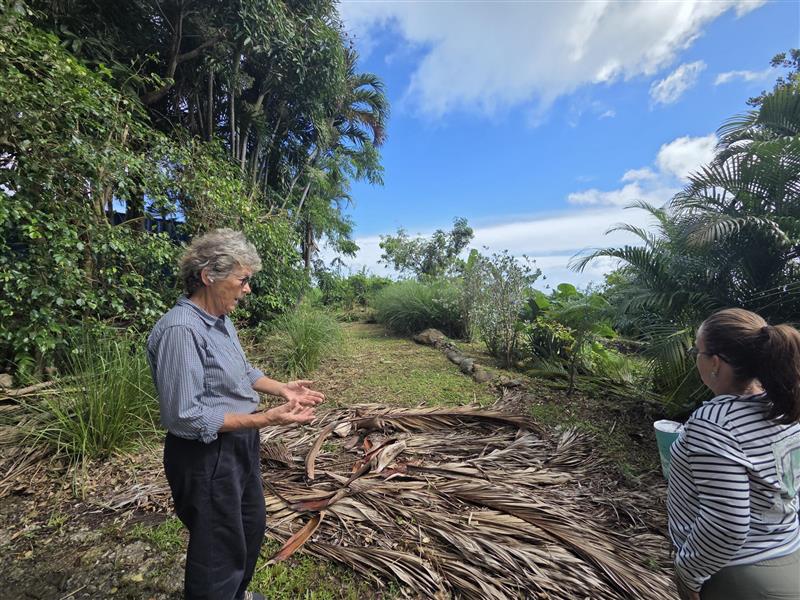
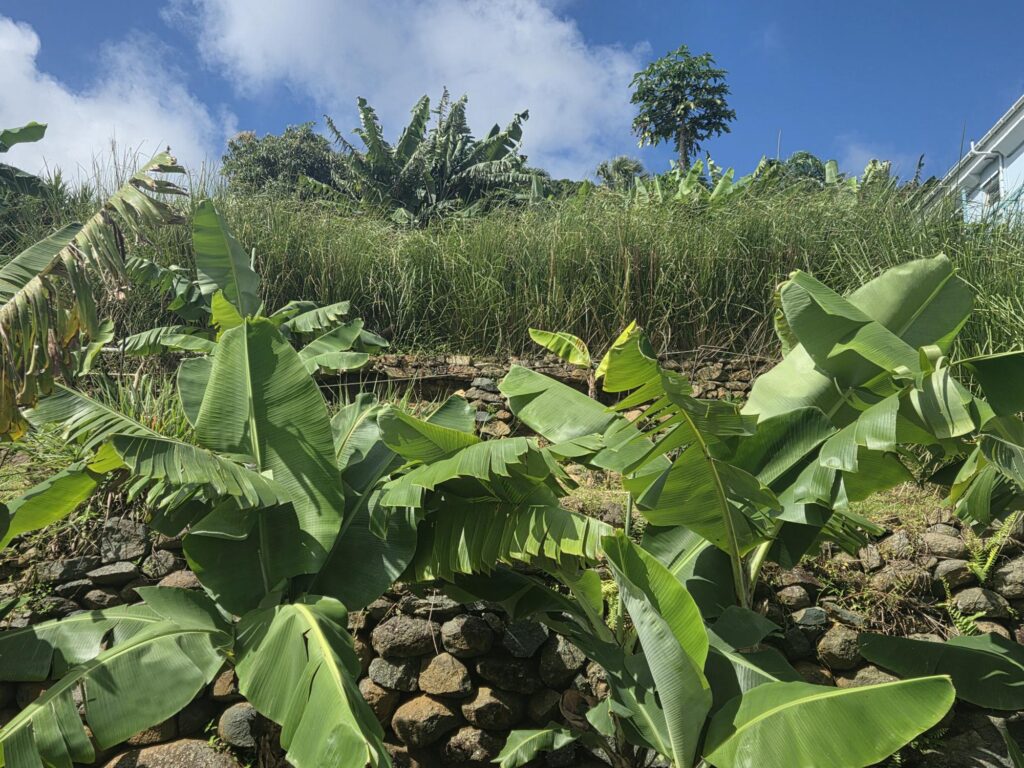
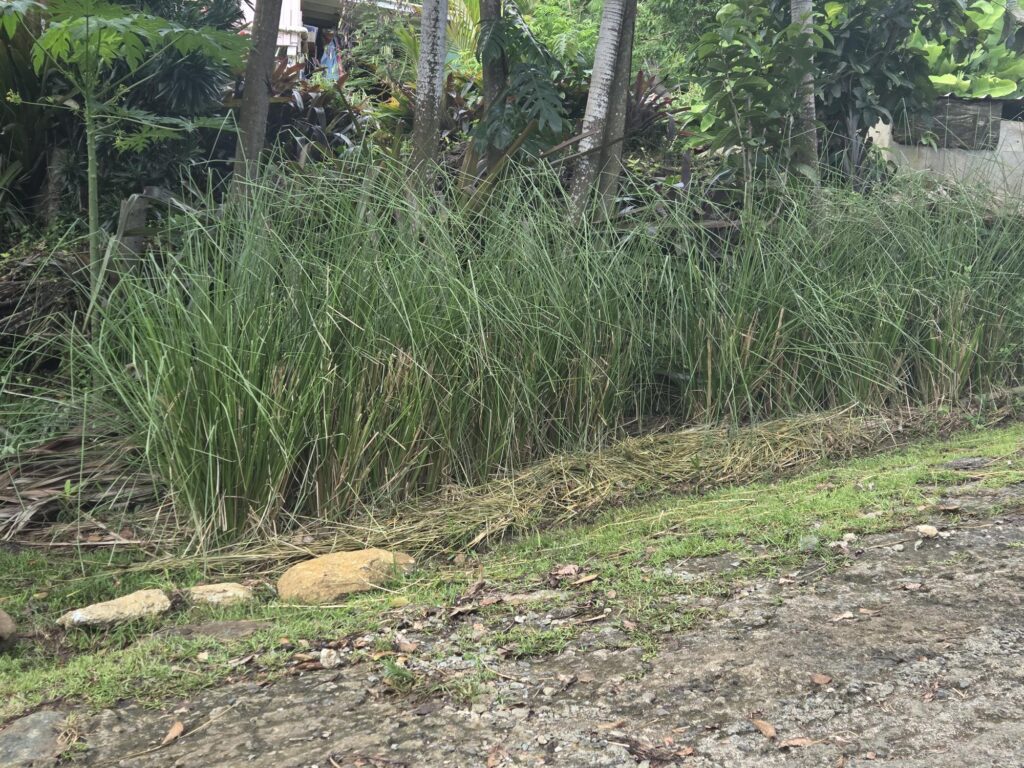
Scientifically named Chrysopogon Zizanioides, this genotype is referred to as “Sunshine” because it was cultivated in Sunshine, Louisiana. Sunshine is non-invasive and does not spread by seeds. Its roots can go down at least 3-4 meters or 10-13 feet into the soil. These super roots anchor the soil in place. They must be dug up and divided to form protective rows throughout your fields, gardens, or along property lines.
Vetiver is a low-cost method that can be used to prevent flooding. It cleans and filters contaminated water from upland sources and reduces environmental pollutants that enter our bays and oceans. By limiting runoff, Vetiver plays an important part in protecting our coral reefs and marine ecosystems which are progressively impacted by climate change.
Dr. Martin highlighted “There are many things that we can be growing here as long as we protect our land and keep it healthy.” What can you do to incorporate Vetiver grass into your gardening and farming practices? Watch the full interview with Dr. Martin and Kitty to learn more.
Science Saturday, a monthly Facebook LIVE event, airs on the second Saturday of each month at 10 a.m. Watch the full interview on the Department of Planning and Natural Resources Facebook page or the Science Saturday YouTube playlist.
